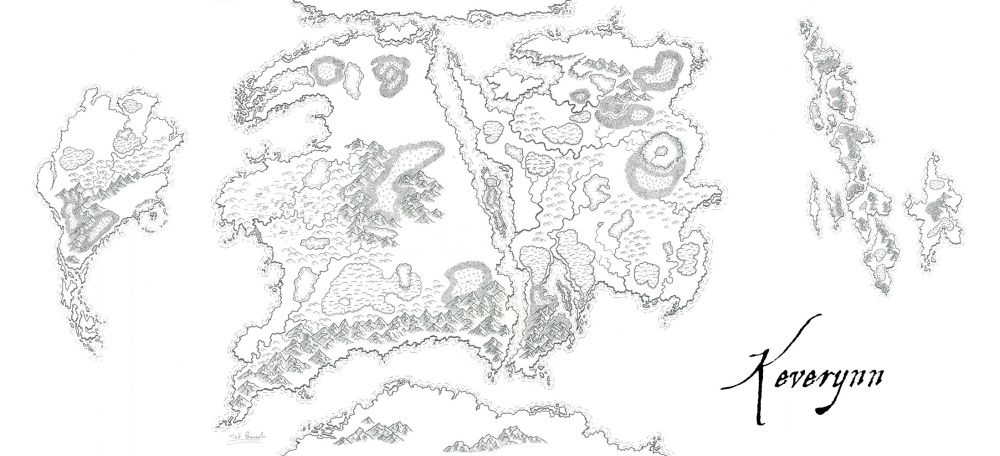Keverynn
Jump to navigation
Jump to search

Stats
- Name: Keverynn
- Location: 4th planet
- Size: a bit smaller than Earth
- Rotation: 26 hours
- Revolution: 372 days
- Sun: Telast
- Moons: Ana-Lashann, Ana-Leta, Ana-Turann
- Any other celestial bodies: including Keverynn, there are a total of seven planets in the system and 26 moons.
| Telast | Sun | |
| Aolenn | 1st planet | No satellites |
| Quonar | 2nd planet | Example |
| Tanviyer | 3rd planet | Example |
| Keverynn | 4th planet | 3 moons – Ana-Lashann, Ana-Turann, Ana-Leta |
| Asteroid Belt | ||
| Jeltresh | 5th planet | 2 moons – Zal’ek, Drae’ek |
| Shandrei | 6th planet | 7 moons |
| Example | 7th planet | 12 moons |
History
- Prior to the event known as the Great Walk, designated as year 0 on modern calendars, the Nomad territories didn't exist. There are no written records for what the borders were like prior to this time. At first, the five Nomadic groups were a single group, known as the Iiredafor. Over time, they split into two seperate groups over philosophical differences, becoming the Tir'ri and the Sutar tribes. People from Sutar eventually splintered into both the Aurann and Horyinn tribes as populations grew and ideologies changed. Tir'ri eventually broke into two groups, Tir'ri and Tchupak.
- The borders of the Nomad territories are largely unchanged since the year 468. The borders of the five tribes fluctuate from time to time as populations change, territory is given away and regained.
- The establishment of the five Provinces in the year 661, created new regions on Keverynn.
Modern Society
Modern day Keverynn is a quasi-feudal system. The Dragonlords rule over their respective provinces with the help of their council. The nobility exists, but it’s largely a holdover from the Old Era. They have influence but not as much as they once enjoyed. Most ‘nobles’ are titles only. Those who are still in power fulfil the traditional roles, watching over parcels of land to ensure its safety and to ensure that the taxes reach the capital. Read More